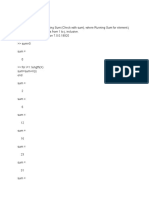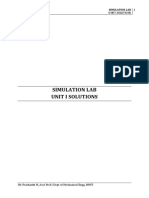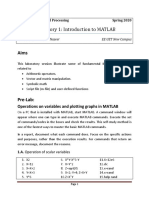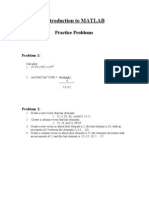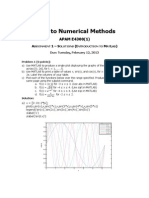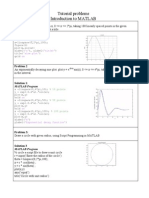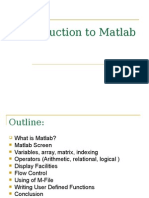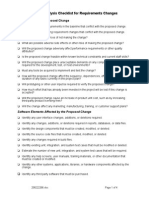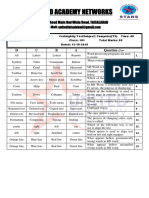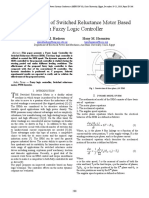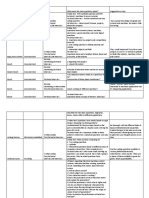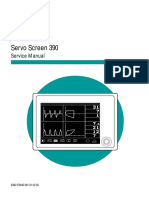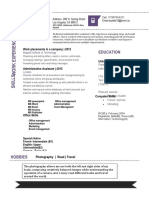0% found this document useful (0 votes)
146 views3 pagesLab Experiment 1: Introduction To MATLAB Objectives
This lab experiment introduces students to MATLAB through tutorials on defining variables, matrices, and plotting results. Students will learn how to write simple MATLAB codes and scripts. The exercises guide students to use MATLAB commands to perform tasks like extracting matrix rows, multiplying and dividing variables, generating random matrices, and plotting functions. The assignments have students create sinusoidal waveforms, factor polynomials, solve equations, and graph functions - requiring them to use commands like plot, ezplot, solve, fzero.
Uploaded by
Paula Camille PalinoCopyright
© © All Rights Reserved
We take content rights seriously. If you suspect this is your content, claim it here.
Available Formats
Download as PDF, TXT or read online on Scribd
0% found this document useful (0 votes)
146 views3 pagesLab Experiment 1: Introduction To MATLAB Objectives
This lab experiment introduces students to MATLAB through tutorials on defining variables, matrices, and plotting results. Students will learn how to write simple MATLAB codes and scripts. The exercises guide students to use MATLAB commands to perform tasks like extracting matrix rows, multiplying and dividing variables, generating random matrices, and plotting functions. The assignments have students create sinusoidal waveforms, factor polynomials, solve equations, and graph functions - requiring them to use commands like plot, ezplot, solve, fzero.
Uploaded by
Paula Camille PalinoCopyright
© © All Rights Reserved
We take content rights seriously. If you suspect this is your content, claim it here.
Available Formats
Download as PDF, TXT or read online on Scribd
/ 3








